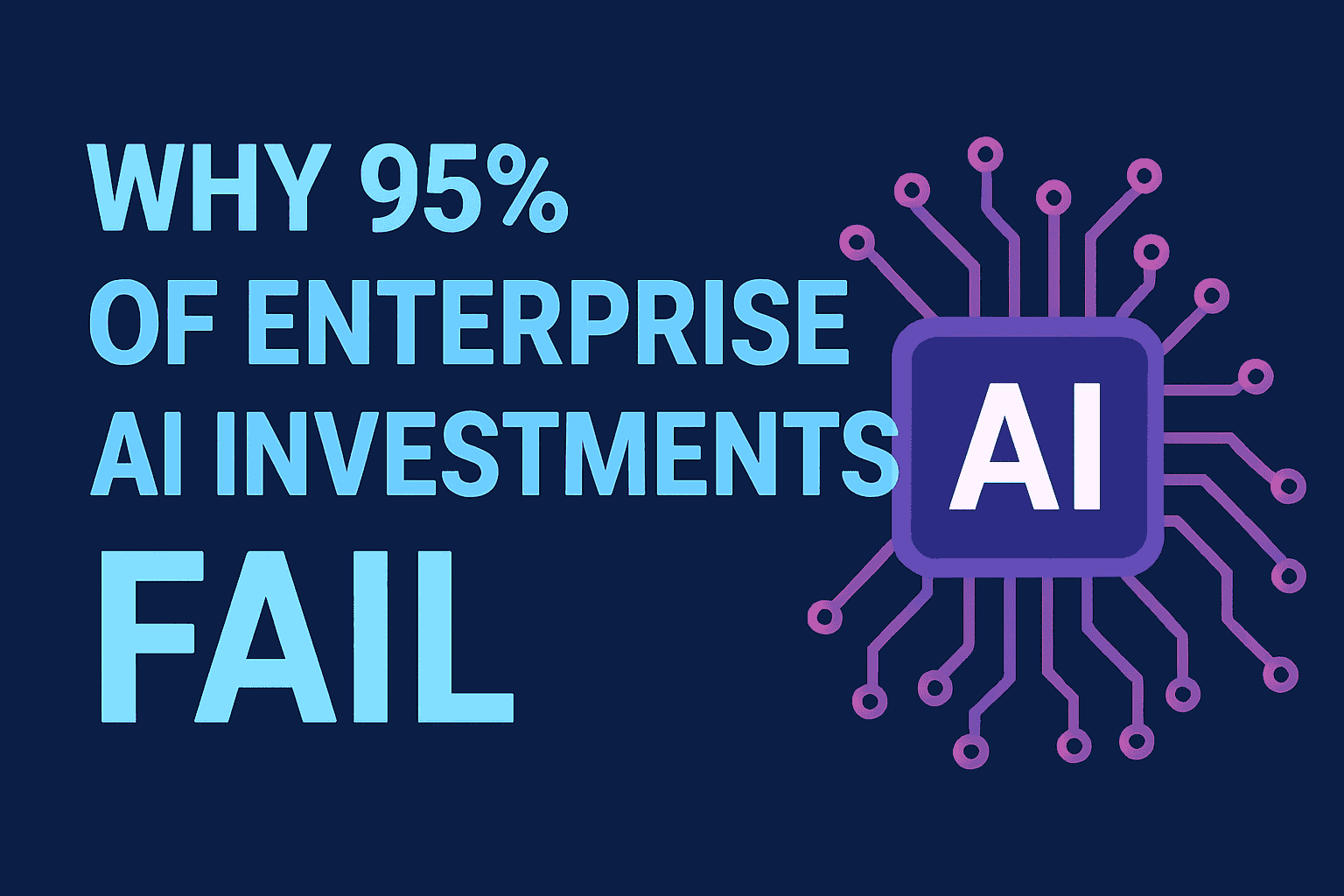Don’t Believe the AI Hype – Just Yet!…
No industry knows how to hype a new technology better than the tech industry. With every new tech revolution, the world has already changed before the tech can do a fraction of the things we are led to believe. Artificial Intelligence (AI) is one of the most hyped technologies of our era, yet many are scratching their heads and asking why? To put all this hype properly in its place, an MIT report titled “The GenAI Divide: State of AI in Business 2025” reveals that 95% of enterprise generative AI pilots fail to yield any measurable impact on profit and loss (P&L). This is true in the early days of any new technology, but this stark statistic underscores that the core issue isn’t AI technology’s inadequacy, but its inability to integrate meaningfully into real business processes. One of the problems with much of this hype is that it tends to inflate stock prices and company valuations. Is the AI bubble about to burst?

The MIT Findings
The research was based on 150 leadership interviews, a survey of 350 employees and an analysis of 300 public AI deployments. In the study, only 5% of pilots achieved rapid revenue growth, typically by focusing on precise problems and working with the right partners. Many pilot studies faltered because generic AI tools such as ChatGPT don’t align with pre-established workflows in enterprises. It seems that organisations are pouring resources into sales and marketing pilots, which need human finesse, while back-office automation, where AI shines, remains underfunded. Projects managed by specialised providers had higher success rates compared to in-house efforts, though industries such as finance and healthcare still prefer internal development due to regulatory demands.
Other AI Research Studies
- TechRadar / MIT NANDA Insight
Another MIT study highlights that despite $35-40 billion in US generative AI investments, 95% have produced little to no tangible operational outcomes. Failures were attributed to shortcomings in AI’s ability to retain data, adapt, and learn, rather than infrastructure or talent gaps.
- Poor Data Quality and Governance
A curated industry analysis by AI Curator found that over 80% of AI projects fail or stall before reaching production. Poor data quality, governance deficits and weak strategy were to blame, and 54% of executives report financial losses directly tied to poor AI governance.
- Process Integration Deficits
A Celonis report asserts that 58% of executives worry that process inefficiencies will limit AI’s potential. Without robust process intelligence (PI) – the contextual mapping of workflows – AI risks merely automating broken or inefficient processes. AI must be embedded intelligently, not superimposed on dysfunction.
- Strategic and Structural Missteps
RAND’s research found that over 80% of AI/ML projects fail, often due to a lack of strategic clarity and poor planning. This research highlights the potential twin dangers of technical antipatterns and an absent business context.
- Common Failure Antipatterns and Fix Patterns
WorkOS stresses that successful initiatives prioritise data plumbing first, placing up to 70% of time and budget on data readiness. They also design human-AI collaboration, not full automation, which has driven measurable results. For example, Microsoft’s Copilot boosted revenue per seller by 9.4%.
- Broader Failure Patterns
Surveys and reports frequently cite unrealistic expectations, misaligned use cases, resource constraints, technical hiccups, mismanagement and overhyped prospects as major failure drivers.
The Hype vs Reality of AI
The hype around AI often overshadows reality. Buzzwords in the tech industry are seldom a good thing, but when they are quoted in sentences like “AI will take over the world,” it fuels inflated expectations. In practice, however, things are not what they may seem. In most cases, AI excels at augmenting, not replacing. Enterprise deployments demand mature data infrastructures, with unified governance and semantic consistency, without which AI attempts inevitably falter. Many projects remain trapped in “pilot purgatory,” hamstrung by poor integration, a lack of human-AI collaboration design and an absence of process intelligence. These patterns reveal that successful AI isn’t magic; as always, it’s down to the execution. Project teams must align tightly with a business pain point, invest relentlessly in data foundations, embed human oversight and choose the right partners.
Where Does AI Deliver Tangible Value?
Despite disappointments, AI is making impactful inroads by enhancing existing methods, not replacing roles:
- Back-Office Automation
Handling repetitive, rule-based tasks (e.g., invoice processing, simple customer queries, etc.) with accuracy and cost efficiency.
- Human-AI Collaboration
Tools like Microsoft Copilot assist human agents when drafting responses and summarising meetings, not replacing roles, but a speed tool that improves productivity.
- Industrial Operations
At companies like BP, AI optimises equipment throughput, predicts maintenance needs and improves efficiency, but only with deep system integration and organisational buy-in.
- Process Intelligence and Monitoring
Celonis champions AI that improves workflows via process mapping, feedback loops and continuous efficiency gains, not blind automation.
- Risk and Governance Layers
Infosys reports that AI mishaps hit 95% of executives, and only 2% of firms meet responsible AI standards, highlighting the need for oversight, ethics and robustness.
AI’s Current Trajectory
While the technology remains full of promise, the reality demands realism as AI is not a silver bullet, nor is it the dreaded job eraser, at least not yet anyway. Most enterprise initiatives fail, not due to flawed algorithms, but poor execution, governance and misalignment. These are common factors that impact many corporate tech investments. Success remains narrow, strategic and collaborative because it must focus on domain-specific tasks, clear metrics, trusted partners and augmenting, not replacing, human roles. AI’s value today lies in enhancement, automation of drudgery and decision-support, where it integrates with workflows and is trusted by people. It’s a bit like a workflow supercharger or speed tool, if you will. As the MIT report starkly shows, without business process integration and clear ROI alignment, AI remains pilot-level vapourware. The path forward lies in grounded, smart deployment, where AI uplifts human capability, not replaces it.
You may want to read: “Why B2B Tech Startups Must Invest in Marketing.”







